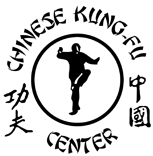One style is not "better" than the other. The two styles complement each other, and ideally, a student should study both to keep his or her internal and external aspects in balance. Both styles will increase flexibility and balance and also help relieve stress. Both styles are also demanding, though in different ways. Generally speaking, you may enjoy Shao Lin more if you are looking for a more aerobic workout with self-defense applications, emphasizing speed and power. Tai Chi may be appropriate for you if you want to improve your mental focus or if you are looking for a regular workout that is less strenuous.
2120 W. Clybourn Street
Milwaukee, WI 53233
(414) 933-7355
staff@chinesekungfucenter.com
Frequently Asked Questions
Students considering joining our school usually have many questions. We've gathered the most common ones here, but if you can't find the information you want, please e-mail us with your questions or call (414) 933-7355. You are also welcome to visit our school during class times.
We encourage everyone to make personal fitness a part of their lives, but our students come in all shapes, sizes and skill levels. If you have not been exercising regularly or have a physical condition such as a back injury, please consult with your physician before beginning any martial art, including one at our school.
Viewing welcome at any class, may start immediately.
Expect your body to surprise you! Even if you are physically active, you may experience some sore muscles as your body re-learns how to move and maintain the correct posture through a variety of positions. At the same time, even if you have not been working out much, you may discover natural aptitudes, such as good flexibility or balance, that you didn't know you had.
We try to make classes as affordable as possible for all students and offer special three-month introductory rates and discount programs. Visit our rates page for more detailed information.
Students should wear clean gym shoes/sneakers and do not need to buy special "martial arts" shoes. We encourage students to wear their school shoes only in the school to keep the soles clean. Uniforms (black pants and school t-shirt) are available at the school and are strongly encouraged but not required. New students should plan on wearing sweatpants and a t-shirt or similar loose-fitting, comfortable clothing.
We generally recommend that students be at least ten years old. Young students often benefit greatly from taking classes with their parents or older siblings, and we have a special Family Rate to make this option more affordable. Please see our rates page for details.
Every student advances according to his or her ability and how seriously they take their training. Students should make a commitment to come to class regularly (at least twice a week) to learn and practice. In addition, students must be willing to practice daily on their own. Generally speaking, students will learn the first two levels of basic training in the first two months. Students then learn their first form, Tan Tui (Springing Legs), which can take another three to six months. As students advance, the forms they learn become more complex and challenging.
Our head instructor Jeff Nickel decides on a case-by-case basis when Shao Lin and Tai Chi students are eligible to study one of the weapon forms. Generally speaking, students must be finished with their basic training and Tan Tui, which usually takes four to five months. Weapons taught at our school include: Saber, Double Saber, Sword, Double Sword, Staff, Spear, Guan Dao, Sun Moon Rings and Fan.
Students frequently participate in two-man conditioning exercises and forms which involve contact, but we do not spar during class.
Traditional Kung Fu, which developed in China thousands of years ago, does not use a belt system. Grandmaster Yin taught students in the same way he had learned as a young man in China, and we continue that teaching tradition.

